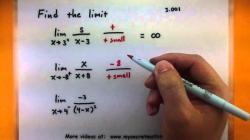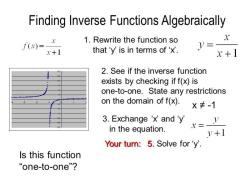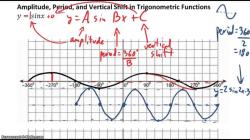How do you find linear regression on a calculator?
Performing linear regression on a calculator typically involves using the built-in statistical functions that are available on most scientific and graphing calculators. The following step-by-step guide explains how to find linear regression on a calculator using the TI-84 Plus, a popular graphing calculator. The specific steps may vary slightly depending on your calculator model, but the general process is similar.
Step 1: Enter Data
- Input your data pairs (x, y values) into the calculator. You can do this by pressing the "STAT" key and then using the "Edit" or "Data" option to enter your data into lists. For example, you might enter your x-values into L1 and y-values into L2.
Step 2: Access Linear Regression
- Once your data is entered, go back to the main calculator screen.
Step 3: Start the Linear Regression Calculation
- Press the "STAT" key again and navigate to the "CALC" menu. This is where you'll find the linear regression functions.
Step 4: Choose Linear Regression
- Scroll down or up (using the arrow keys) until you find the linear regression options. Typically, they will be labeled as "LinReg(ax+b)" or "LinReg(a+bx)." Select the appropriate option based on the form of the linear equation you want (y = ax + b or y = a + bx).
Step 5: Select Data Lists
- After choosing the linear regression option, you'll need to specify the lists where your x and y values are stored. For example, you might be prompted to input "L1" as the list for x-values and "L2" as the list for y-values.
Step 6: Calculate the Regression
- Once you've selected the data lists, press the "Enter" key or an equivalent key on your calculator to perform the linear regression calculation.
Step 7: View the Regression Equation
- The calculator will display the results, including the coefficients of the linear equation (a and b), the correlation coefficient (r), and other statistical information. The equation for the linear regression will be shown on the screen.
Step 8: Store the Equation (Optional)
- You can store the linear regression equation in a variable for future use by pressing the "STO" (store) key and assigning it a variable name. For example, you can store it as "Y1" for easy reference.
Step 9: Plot the Regression Line (Optional)
- If you want to visualize the regression line on a graph, go to the "Y=" menu and enter the stored equation (e.g., "Y1") in one of the function slots. Then, press the "GRAPH" key to see the scatterplot and the regression line.
That's it! You've performed linear regression on your calculator and obtained the regression equation. You can use this equation for predictions and analysis based on your data. Remember that the steps may vary slightly depending on your calculator model, but the general process should be similar. Refer to your calculator's user manual for specific instructions if needed.
Linear Regression on a Calculator: Step-by-Step Instructions
To perform linear regression on a calculator, you will need to have at least two data sets: one for the independent variable (x) and one for the dependent variable (y).
Once you have your data sets, follow these steps:
- Enter the data into your calculator.
- Press the STAT button and select CALC.
- Select the linear regression option (usually labeled LinReg or LinReg(ax+b)).
- Enter the names of your data sets.
- Press the ENTER button.
Your calculator will then display the results of the linear regression analysis, including the slope, intercept, and correlation coefficient.
Crunching Numbers: How to Find Linear Regression Using a Calculator
Linear regression is a statistical technique that can be used to analyze the relationship between two variables. It can be used to predict the value of one variable based on the value of the other variable.
To find linear regression using a calculator, you will need to have at least two data sets: one for the independent variable (x) and one for the dependent variable (y).
Once you have your data sets, follow these steps:
- Enter the data into your calculator.
- Press the STAT button and select CALC.
- Select the linear regression option (usually labeled LinReg or LinReg(ax+b)).
- Enter the names of your data sets.
- Press the ENTER button.
Your calculator will then display the results of the linear regression analysis, including the slope, intercept, and correlation coefficient.
The slope of the regression line tells you how much the dependent variable (y) changes for every one-unit change in the independent variable (x). The intercept of the regression line tells you the predicted value of the dependent variable (y) when the independent variable (x) is equal to zero. The correlation coefficient tells you how strong the relationship is between the two variables.
Analyzing Data: Performing Linear Regression with a Calculator
Linear regression can be used to analyze data in a variety of ways. For example, it can be used to:
- Predict future values of a variable.
- Identify relationships between variables.
- Test hypotheses about relationships between variables.
To perform linear regression with a calculator, you will need to have at least two data sets: one for the independent variable (x) and one for the dependent variable (y).
Once you have your data sets, follow these steps:
- Enter the data into your calculator.
- Press the STAT button and select CALC.
- Select the linear regression option (usually labeled LinReg or LinReg(ax+b)).
- Enter the names of your data sets.
- Press the ENTER button.
Your calculator will then display the results of the linear regression analysis, including the slope, intercept, and correlation coefficient.
You can then use the results of the linear regression analysis to analyze your data in a variety of ways. For example, you can use the slope of the regression line to predict future values of the dependent variable (y) for given values of the independent variable (x). You can also use the correlation coefficient to test hypotheses about the relationship between the two variables.
Linear regression is a powerful tool that can be used to analyze data in a variety of ways. By using a calculator to perform linear regression, you can easily and quickly gain insights into your data.













